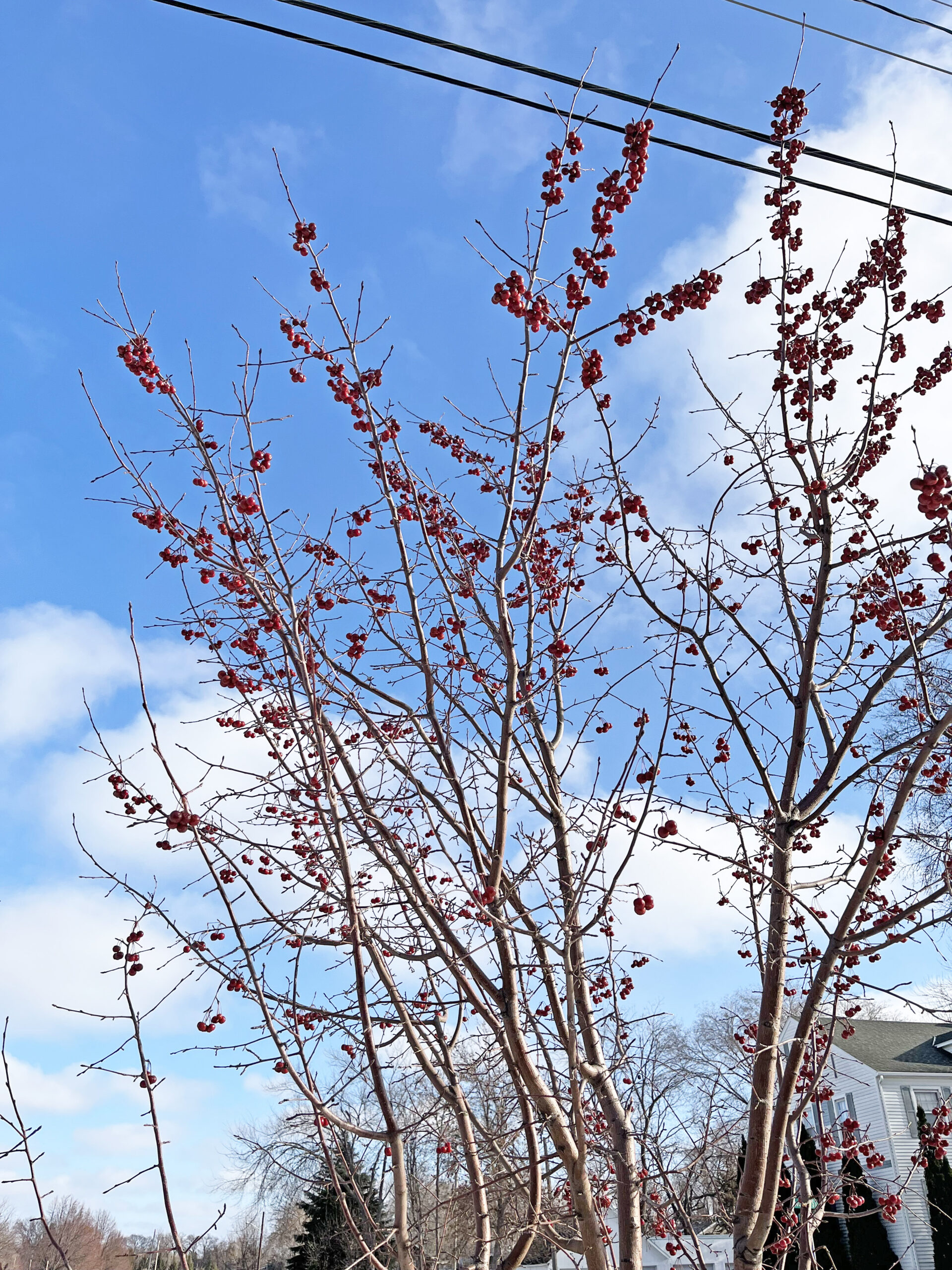Talking Plants
Jillian Patrie | University of Minnesota Yard and Garden Extension
Birding is a relaxing pastime for many people, connecting us to nature during the cold winter months. Whether you are feeding, observing or providing habitat, all of these actions are important for keeping our feathery friends happy and at home.
Feeding birds is the most common interaction we have with them and a plethora of interesting species can be spotted this way. In the Northwestern region of Minnesota, we see black capped chickadee, red winged black birds, Blue Jays, Cardinals and many more. How can we successfully attract birds to our backyards while also keeping their health in mind? Many landscape plants can be a source of food and provide habitat for our winged friends. Crabapple fruit that lingers into the winter can be an easy source for birds and squirrels alike. Many shrubs such as dogwood, American cranberry and aronia are all perfect landscape plants that also feed wildlife. Trees that make seeds such as Linden, Elm and American Hazelnut can attract nuthatches, wrens, jays and cardinals. Perennial flowers like black eyed-susan, can attract mocking jays, wood warblers and waxwings. If you want to learn more about what plants can attract a variety of birds visit audubon.org and search by zip code!
Feeding birds with seed feeders is another way to bring birds to your landscape, these feeders commonly consist of large or small seeds and suet. The Minnesota Department of Natural Resources cite that 80-90% of seeds used in feeders are black-oil sunflower seeds. Attracting “northern cardinals, blue jays, black-capped chickadees, house and purple finches, American goldfinches, evening and pine grosbeaks, Canada jays, nuthatches, crossbills, titmice, and many more.” Pro tip: consider sunflower hearts, which are shelled if you want to avoid the mess. Peanuts are recommended for chickadees, nuthatches and many more as a nutritious snack. If you are interested in learning more about what makes the best seed and food for birds visit https://www.dnr.state.mn.us/birdfeeding/winter.html.
If your favorite way to interact with birds in the winter is by observing them, creating a habitat in your yard that provides food and shelter is one easy way, otherwise you can observe them in their natural habitat by walking local trails. Consider visiting the following locations where bird observation and conservation has been taking place.
Orchard Glen & Forest River Park, Fargo
MB Johnson Park, Moorhead
Buffalo River State Park, Glyndon
For more information about birds and seasonal migration in the region visit greatplains.audubon.org. If you would like to learn more about creating a wildlife friendly landscape visit https://extension.umn.edu/lawns-and-landscapes/landscape-design.
For questions about this article or for local assistance please contact Clay County Extension Educator Jill Patrie at 218-299-7338 or by email at patri350@umn.edu.


